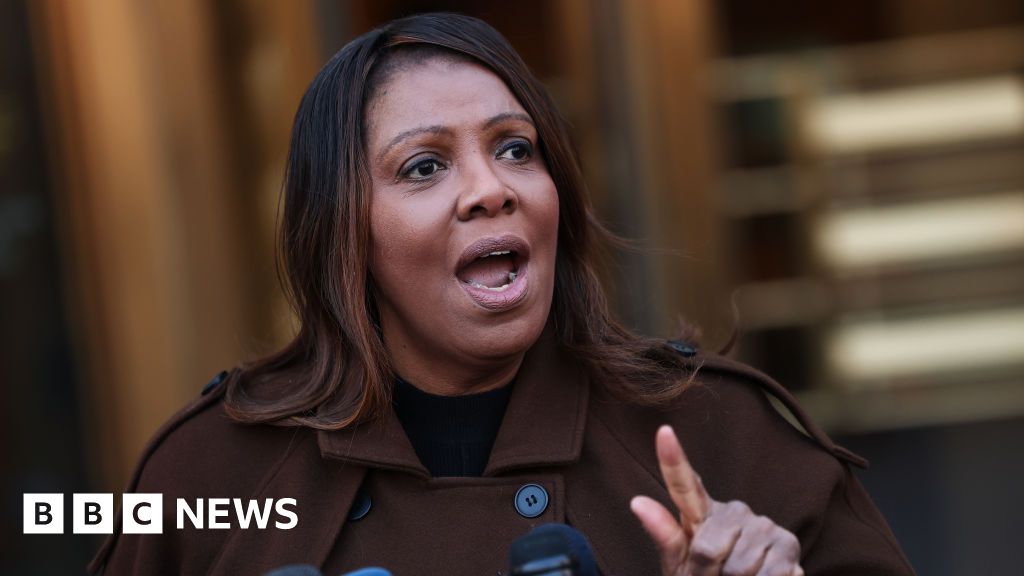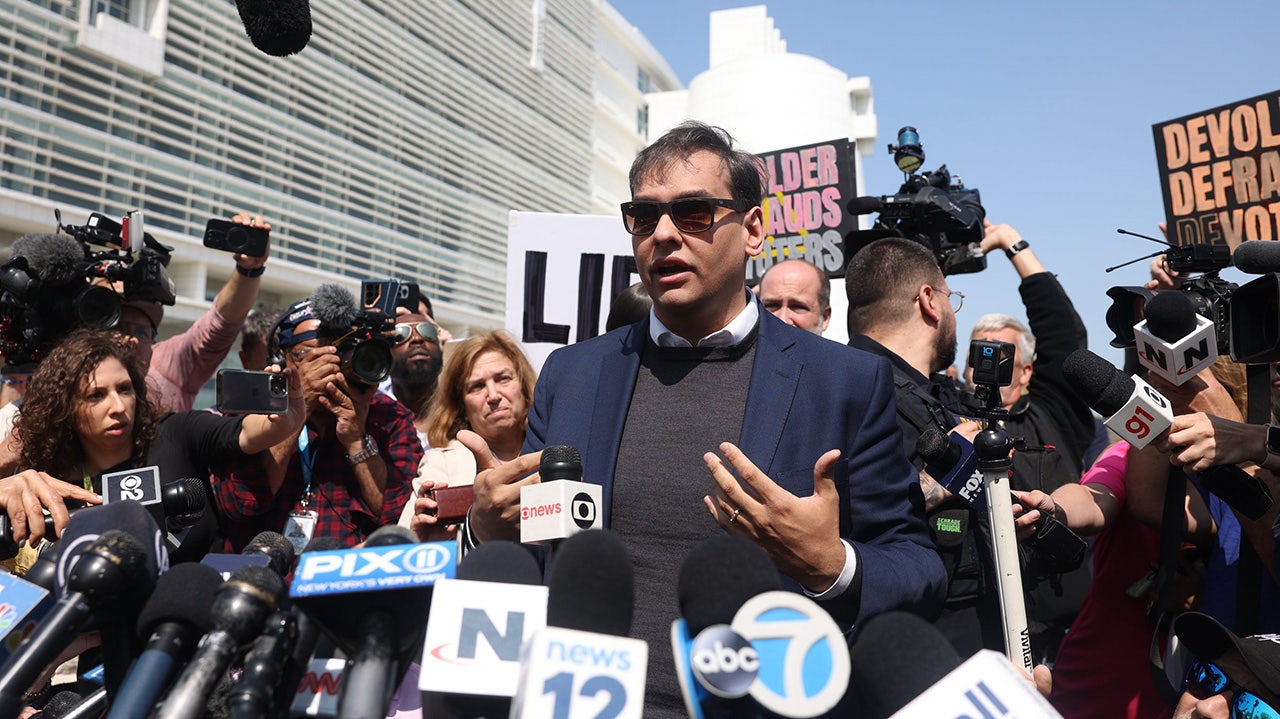Movie Reviews
Stream It Or Skip It: ‘John Wick: Chapter 4’ on VOD, Where Comedy and Brutality Taste Great Together

Shouldn’t’a killed his dog. John Wick: Chapter 4 (now streaming on VOD services like Amazon Prime Video) is the continuing story of a man with a thing for vengeance. He’s also a pretty decent marksman. There’s more to it, with the world-building and mythology of the overarching context, but none of it is as important as John Wick’s singular focus. What’s crucial here isn’t the why but the how – and how! – of the Wick films, with which stuntman-turned-director Chad Stahelski has used to elevate action movies from popcorn fodder to art, a superbly violent ballet of brutality. And audiences have followed him and fully committed star Keanu Reeves, with each film garnering larger audiences, Chapter 4 topping them all with a $427 million worldwide box office take. Of course, it gets into more of the franchise mythology, which forms a nifty basis for the stuff we’re here for, namely, the gun-fu, and to marvel at the durability of the titular action hero, and Reeves himself.
The Gist: FIST. FIST. FIST. John Wick (Reeves) is training and the thing he’s punching is bloody from his knuckles. Wick is – get this – readying himself to kill someone. Go figure. The sun burns, the world turns, the frigid unfeeling and indifferent vacuum of space yawns into infinity, and John Wick kills. The first man he kills today is the Elder, provoking the rage of the High Table, which I believe is a secret society of some type that runs the world, but it doesn’t matter, because the group has it out for Wick and will assign a haughty and lubricious tea-sipping Frenchman known as the Marquis (Bill Skarsgard) to send a million-zillion men to Wick so that Wick may kill them. Aha! Yes, that’s the whole of everything that matters – the million-zillion hopeless men who are about to die in creative, inventive, nasty and often rather amusing ways.
I could sit here and describe how Wick uses nunchaku and a pistol to fend off one guy and then a second guy so he may headshot a third guy and go back to the first guy and fend him off then fend off the second guy then headshot the first guy then finish off the second guy, until he runs into another batch of guys. Some of the guys are head-to-toe armored, even their faces, so it’s not always easy, but Wick is hard, hard as a motherf—er gets, and he can take them all out. He has a bulletproof three-piece suit, plenty of ammo and the unceasing will of glacial motion or plate tectonics, maybe even time itself. He. Is. Un. Stopp. Able. There’s a sequence set near the Arc de Triomphe where he – get this – fights and kills some bad guys, in the midst of ceaseless traffic, and is hit by a car I-don’t-know-how-many times, leading one to assume his bones are made of steel. Keanu characterizes Wick as a weary man with aching muscles and, during a climactic sequence, a joke is made of him having to use those battered and bruised muscles to climb a massive staircase. And then he subsequently tumbles all the way down them like Homer at Springfield Gorge. So he has to climb them again.
Where was I? Right – I could sit here and describe all this stuff and never do it justice. Good thing there’s some plot here to care about, somewhat, especially when it involves Wick’s old pals Winston (the great Ian McShane) and Charon (Lance Reddick), who are targeted by the higher-ups for their allegiances to our guy. The Bowery King (Laurence Fishburne) has something to do with all this, as does Shimazu Koji (Hiroyuki Sanada) and his daughter Akira (Rina Sawayama), and the Harbinger (Clancy Brown), a guy who makes sure all the High Table’s obscure bureaucratic rules and customs are followed. More interesting are Mr. Nobody (Shamier Anderson), a bounty hunter trying to extort the Marquis for big money to kill John Wick, a task that’s on par with, well, I already compared Wick to time itself, which will cease only with the destruction of all reality, so let’s just say Mr. Nobody has his work cut out for him. Mr. Nobody also has an awesome dog who’s tough as hell and responds to the command “nuts” by finding the nearest bad guy and emasculating him. There’s also a gent named Caine, a blind warrior played by Donnie Yen, who – wait, did they name a blind man Caine? Yes, they did. He’s an old friend of John Wick who’s now a foe of John Wick, and it perhaps goes without saying that being the former is far healthier than being the latter. Meanwhile, who’s taking care of John Wick’s dog? Sounds like a spinoff to me: John Wick’s Dogsitter.
What Movies Will It Remind You Of?: The Zatoichi films, some old Westerns like The Good, the Bad and the Ugly and High Noon, Die Hard, Rumble in the Bronx or maybe Supercop, Enter the Dragon, Mad Max: Fury Road for some reason, and I’m also reminded that I’d like to rewatch Atomic Blonde and Extraction.
Performance Worth Watching: Keanu plays Wick as a man who knows he’s Going To Hell For This, and is well aware that he was put on this earth to be a killing machine, although it’s quite clear that he’s very tired about it. It’s a very modern characterization in the sense that, beneath all the savagery, he knows that all this murder just wears on the soul after a while. Marion Cobretti and Ivan Danko never had such self-awareness.
Memorable Dialogue: Yin meets yang:
Wick: Those who cling to death, live.
Caine: Those who cling to life, die.
Sex and Skin: No time for any of that!
Our Take: “Ballet” is the cliche word we all use in reference to the Wick films, because it’s deliciously ironic how Stahelski finds the sweet spot between choreographic grace and outright sadism. But after four of these movies, I can’t help but conclude that they’re physical comedies at heart, channeling the spirit of Jackie Chan more than ’80s and ’90s action heroes. There’s a reason the underground radio station in the films is WUXIA, because they have more in common with snapping-chopsticks martial-arts slapstick Kung Fu Theater fare. It’s the giggly thrill of one man against many, way too many; one man whose skills transcend all reason and therefore render him capable of dispatching all challengers by using his fists and trigger finger and whatever happens to be nearby, from a car to a highly convenient set of nunchucks, often in an over-the-top, absurd fashion. I feel Bruce Lee in these movies, and one invokes the name carefully. Bruce Lee inspired awe and amusement in equal measure. And even with the heavy weight of Wick’s backstory, his nothing-to-lose M.O. inspired by the loss of his wife and dog, his ingrained (and certainly learned) instinct to killkillkill, John Wick 4 made me laugh longer and harder than any of the many, many things I’ve seen in months.
And there’s another delicious irony – finding comedy in slaughter. Maybe we’re sickos for laughing at the Wick headshot-o-rama, at all the death wrought upon the masses of idiots who dare challenge our guy, who’s not a hero, but can be pretty damn heroic in his single-mindedness, but also isn’t above letting his pain and trauma bubble to the surface and keep him motivated. Maybe that’s something to aspire to, maybe not (get a hobby that isn’t guns, Wick – may I suggest cross-stitch or animal husbandry?), but the ingeniousness of the series, storytelling-wise, is how it’s not a redemption story. No, it’s past that; he’d abandoned his previous assassin self for a quiet life of love and snuggles, but was dragged back by malicious and manipulative entities, and they had to pay for it. The danger lies in romanticizing revenge, which these films don’t necessarily do. Rather, it turns his determination into a force of nature so absurd, you can’t help but laugh.
That, I assert, is intentional. Stahelski and Reeves are very much in on that joke, and the meta-comedy of one-upmanship. It’s hard to surpass the sheer visual exhilaration of previous Wicks, so Chapter 4 amplifies the comedy by tossing Wick down a couple hundred steps or battering a villain who looks cribbed from a Dick Tracy comic strip. (If you want one-upmanship pushed to sub-moronic extremes, feel free to suffer through the Fast and Furious movies, which are outright hacksmanship in comparison.) The director’s brand of turbocharged gun-fu often occurs in front of succulent backdrops ranging from boxy ultramodern to ultraclassical goth – the latter tied to the old-world, analog aesthetic of the underground world of assassins and puppeteers in which Wick operates. I can’t help but imagine Stahelski scouting a variety of mouth-agape locations and thinking, hey, this would be a lovely place to kill a lot of people. And we can’t help but agree.
Our Call: I can’t say whether John Wick: Chapter 4 is better or less-good than the other Wicks, but it’s easily the funniest – and that reflects the restless creativity of its makers. I think I prefer the sleek simplicity of the first movie, which was 9.8 parts direction, 0.2 parts story. Regardless, you need to STREAM IT and prep for the impending spinoffs: The Continental, a miniseries starring Mel Gibson (!) coming this fall on Peacock, and Ballerina, starring Ana de Armas as, you guessed it, an assassin out for revenge.
John Serba is a freelance writer and film critic based in Grand Rapids, Michigan.

Movie Reviews
Movie Review: “THE ASTRONAUT” doesn’t stick the landing – Rue Morgue


At first, as she undergoes physical and mental rehabilitation, the only trauma she undergoes is what she’s told are the expected side effects of readjusting to our atmosphere: bouts of tinnitus and an occasional nosebleed. She also experiences “antigravity hallucinations” of floating objects, though fairly early on, first-time feature writer/director Jess Varley makes it clear these sights are not just in her head. In general, THE ASTRONAUT eschews the question of whether Sam is just imagining the unsettling events that distress her while she’s alone in that house. It’s not long before they lead her to believe that something may have hitched a ride back to our planet with her.
Varley (who has had small acting roles in OFFSEASON, TAKE BACK THE NIGHT, 2023’s NIGHT SHIFT and others, and contributed to the anthology PHOBIAS) builds some basic there’s-something-outside/inside-the-house tension into THE ASTRONAUT, and Mara does strong work in the title role. As Sam becomes bewildered and creeped out by what’s happening around her–and to her own body–the actress keeps us feeling for her. Sam’s desperation for answers is tempered by her knowledge that admitting something’s wrong will jeopardize her chances of selection for future missions–a simple and understandable motivation at first for not disclosing what’s happening to her.
Yet as the bizarre events escalate, and are witnessed by others, it becomes increasingly difficult to believe Sam’s reluctance to relocate. Nor does her undoubtedly significant scientific background come into play as the action heats up, and she’s reduced to simply running for her life through the bowels of the house. These and the movie’s other settings are shot with a great deal of atmosphere by DP Dave Garbett (EVIL DEAD RISE, ASH VS. EVIL DEAD), and it’s all backed by an effective, sometimes aggressive score by Jacques Brautbar. What’s missing for most of the running time is a sense that movie is about anything more than it appears on the surface, despite a few hints at themes of family. Both Izzy and Sam herself are revealed to be adoptees, the latter not surprising considering that her father, a general who oversaw her mission, is played by Laurence Fishburne.
THE ASTRONAUT does attempt to bestow deeper meaning upon the proceedings with a latecoming story twist, but unfortunately, it results in an abrupt tonal shift that throws the whole film out of whack. It really needed a whole additional act to fully explore this new idea; instead, it’s rushed through quickly, ending the movie at 81 minutes before the final credits and leaving a number of questions dangling. One leaves the movie wondering whether it got heavily pared down in the editing process, or it needed more preparation before the launch button was pushed.
Movie Reviews
After the Hunt movie review | Guadagnino’s #MeToo drama is an unrelenting mess – HeadStuff

Luca Guadagnino’s After the Hunt is the latest entry in a bizarre string of thought pieces, (see Apple TV’s The Morning Show), which appear to aim to explore the hypocrisy of cancel culture, pushing back against “#MeToo” and “woke” by asking one central question – “yeah but, did he really do it?”
At least, that’s what I think it was. Amidst the wooden dialogue, overblown runtime, senseless subplots and infuriating pretence of the thing, it was quite difficult to decipher a) what this film wanted to say, and b) whether it wanted to say anything at all.
The premise is admittedly strong, as is the cast. The central roles are occupied by Julia Roberts and Ayo Edebiri, with Andrew Garfield and Michael Stuhlbarg supporting. Roberts plays Alma Imhoff, a well-regarded Yale University philosophy professor and bastion of feminism, who is on track to secure tenure alongside her sleazebag stroke colleague stroke potential lover Hank, portrayed by Garfield. Edebiri plays Trumpian nightmare Maggie – a rich, ambitious black student whose mediocrity is mitigated by her too-close-for-comfort relationship with Roberts’ Alma. Stuhlbarg, on the other hand, is an infuriating sideshow as Roberts’ husband Frederik, whose over the top affection for his uninterested wife is a constant source of cringe, serving no purpose to the plot whatsoever. Following a boozy intellectual circle jerk, or “party,” at Frederik and Alma’s home, Maggie is walked back to her student apartment by aforementioned lothario Hank. She later appears on Alma’s doorstep, accusing Hank of ambiguous sexual misconduct – forcing Alma into a choice between her professional integrity and her relationship with Garfield, all grease-ball haircut and button-down Ralph Lauren shirts.
What unfolds could have been fascinating. The elements could have lent themselves to an intriguing exposition of class, the murky waters of academia, or the limits to which we are willing to go to do what is right. Quite obviously, there could also have been a discussion of what accusing somebody of sexual assault means, particularly somebody in power. There could have been an allusion to Edebiri’s bravery, a conversation about exploitation, or a reminder of how commonplace all of this really is. Unfortunately, there was absolutely none of that.
Instead, what is serves up is a self-flagellating mess. From a directorial standpoint, all we get are non-sensical close ups of character’s hands, and an imposing soundtrack which *ticks* persistently, presumably in order to create tension, despite the scenes unfolding being about as tense as an episode of Peppa Pig. The script is also unapologetically woeful. Presumably in an attempt to elevate the intellectualism of the exercise, scenes of Garfield, Roberts et al discussing philosophical concepts and writers are ceaselessly pigeonholed. These moments feel like hours. They are nonsensical, tedious, and do nothing other than relay to the viewer that the writers watched a Youtube video about Immanuel Kant the night previous. The dialogue throughout the film is suitably crass and uninventive, with the particular highlight in this regard undoubtedly belonging to a moment whereby, when confronted by Edebiri’s non-binary lover, Roberts’ Alma proudly states “They – go away.”
At its core, in a manner that seems to mirror Garfield’s Hank’s attempts to button his shirt, After the Hunt has absolutely no idea what it is trying to do. Any effort made to place Edebiri at the centre of the story is sidelined by a senseless side plot involving Alma’s unexplained health issues or her husband hanging bras in a bathroom. Any attempt to discuss the folly of student activism or the privilege of “today’s generation” is foiled by petulance from the forces behind the film, usually in the guise of intentionally misgendering non-binary characters or terming their college essays mediocre. Any attempt to say anything, literally anything at all, is drowned out by the aforementioned infuriating soundtrack or a repeated cut scene to Alma’s husband kissing her forehead while she is in bed. The entire thing is infuriatingly opaque, choppy, and as a result, unrelentingly disappointing.
I say disappointing not only because of the obvious quality of the cast or usual standards of the director, but because of what this After the Hunt represents. Throughout, the entire thing felt like an attempt to shine a light on the stupidity of the youth, the folly of the left and the ridiculous nature of cancel culture. Is such a discussion really necessary? Would it have killed the film to at any stage come out and say, yes, rape is bad? Is there any merit at all to villainising student protestors in a climate where they are expelled for speaking out about violence in Palestine, or threats to minorities? Surely the answer is no. Further, The whole vibe of the film was that it seemed to think its ideas were original. In reality, nobody contests that college students are privileged, nobody contests that students are idealistic, and nobody contests that the new generation fails to fetishise pain in the ways that the older one did. Does that mean it’s valid to make those points in a film that’s ostensibly about a college lecturer raping a student? Again, surely the answer is no.
The classlessness of this entire affair is summated by Guadagnino’s choice to pay homage to Woody Allen, a man accused of molesting his adopted daughter, in the film’s opening credits. There, Guadagnino borrows Allen’s font and lists the film’s actors in alphabetical order in Allen’s characteristic style. Taken at its very best, this is a satirical move which is not very funny. Taken at its worst, it is tipping the cap to somebody who is accused of molesting his own daughter in a film which is again, on its face about rape.
One joke that does land, however, is that a film critiquing the pretence of youth runs for nearly two and a half hours – and centers on a Yale philosophy professor, of all people, as its wronged man. Maybe it is for the best that this couldn’t say what it wanted to – what it did manage to splutter out was not all that interesting.
After the Hunt is in cinemas from Oct 17
Featured Image Credit
Movie Reviews
Kambi Katna Kathai Movie Review: Con job cinema that mostly cons itself

Synopsis
: A smooth-talking conman digs up a valuable diamond only to find his hiding spot transformed into a temple, forcing him to pose as a godman to retrieve his prize.Kambi Katna Kathai Movie Review: When your buried treasure becomes a place of worship, the logical next step is obviously to become a fake guru. Kambi Katna Kathai operates on this brand of logic-optional comedy, where Arivu (Natrajan Subramanian), a fast-talking scamster, steals the precious Kohinoor diamond and buries it in an empty field. Six months later, post-jail stint, he discovers his stash spot is now the Thoongum Thuravi temple. His solution? Transform into Arivanandha, a Himalayan godman, complete with devoted disciples recruited from local beggars.The setup has potential. Arivu’s rapid-fire con artistry, his double-dealing with corrupt MLA (Muthuramanan) and his aide Vetri (Mukesh Ravi), and the scramble to locate the missing diamond amid ashram politics creates a serviceable heist framework. Natrajan sells the fake confidence well, delivering his torrents of dialogue with convincing sleaze. The film truly felt alive when he reached his peak of sleaziness, as he wormed out of situations and became bolder in his scams. The comedic diversions just felt uninspired. Seeing a white foreign girl he’s tussling with during a robbery and then being all lovey-dovey with her as she tries to get tough with him? Does anyone find that funny?At two hours nineteen minutes, the film drags considerably, padding scenes with unnecessary romantic subplots involving Vetri and the MLA’s daughter Yazhini (Aarthi Shaalini), plus an out-of-work actress Sangamithra seeking refuge at the ashram. The comedy remains stubbornly hit-or-miss. Some bits land through sheer audacity, but most default to tired tropes of men fawning over women or loud, predictable gags. TSR, in particular, feels distractingly over-the-top. Two songs appear in the first half for no discernible reason other than obligation.Singam Puli’s jokes are funny at times, but he can be a bit much. Mukesh Ravi blends into the ensemble with little trouble. Kambi Katna Kathai coasts on familiar Tamil comedy territory without offering fresh angles, feeling somewhat like a Sundar C production stripped of glamour and polish. It avoids being outright cringeworthy, which counts for something, but rarely rises above passable weekend filler. For a film about digging up treasure, it never strikes gold.Written By:Abhinav Subramanian
-

 Augusta, GA1 week ago
Augusta, GA1 week ago‘Boom! Blew up right there’: Train slams into semi in Grovetown
-

 Alaska4 days ago
Alaska4 days agoMore than 1,400 seeking shelter as hundreds wait to be evacuated after catastrophic Western Alaska storm, officials say
-

 Education1 week ago
Education1 week agoVideo: 3 Former College Teammates Reunite on Rangers Coaching Staff
-

 Wisconsin1 week ago
Wisconsin1 week agoAppleton Public Library wins 2025 Wisconsin Library of the Year award for distinguished service
-
Business1 week ago
Los Angeles Times Media Group takes step to go public
-

 Vermont1 week ago
Vermont1 week agoFeds: Springfield dealer ran his drug business from Vermont jail
-
Virginia1 week ago
Match 13 Preview: #8 Virginia
-

 News1 week ago
News1 week agoWhat we know about the charges against New York’s Attorney General Letitia James

















